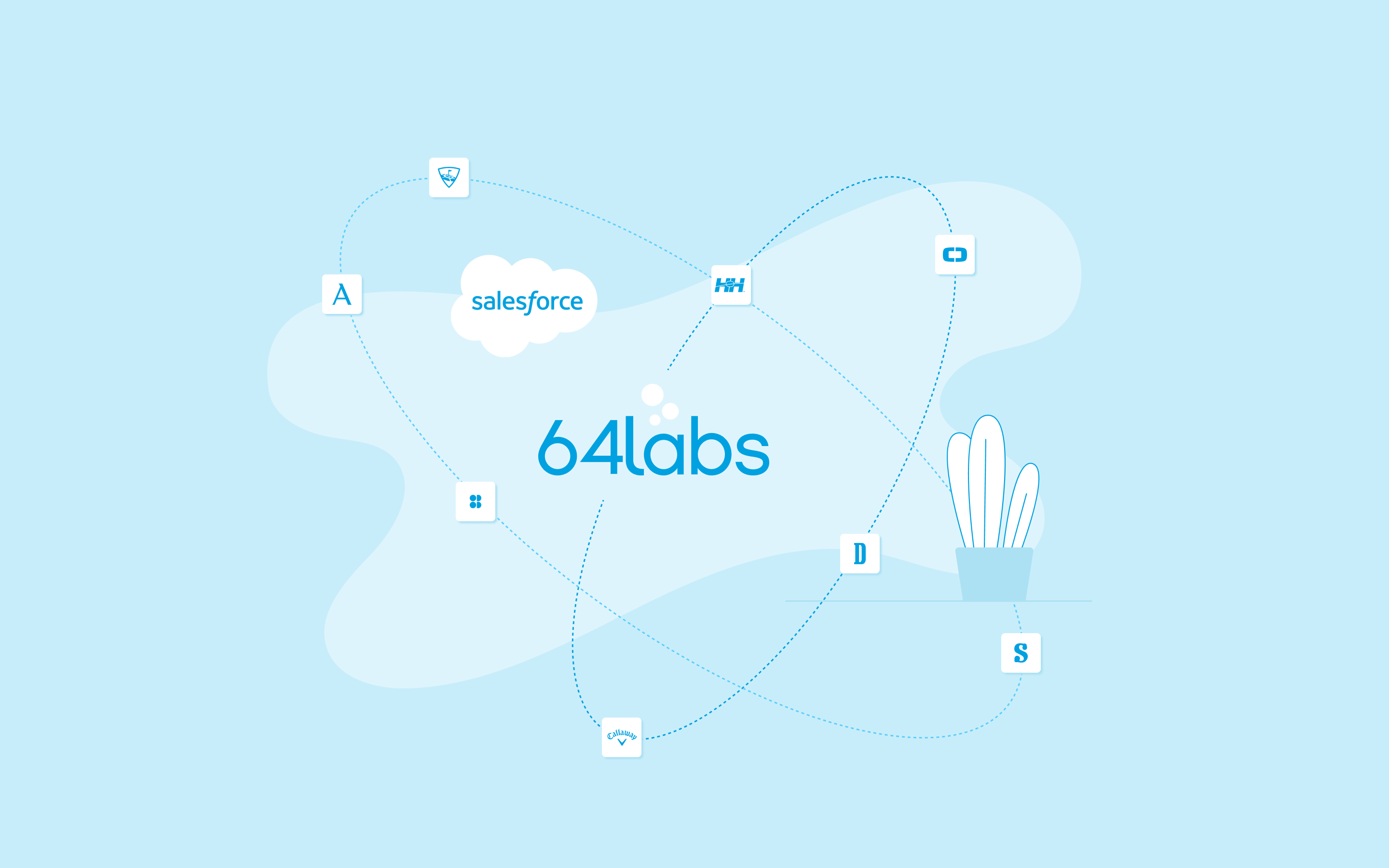
4 launches in two years
Next.js + Vercel SFCC Composable Storefront
Going composable with Next.js and Vercel removes platform constraints. You get the freedom to build with modern frameworks, deliver lightning-fast storefronts at the edge, and scale seamlessly while still leveraging Salesforce Commerce Cloud’s enterprise backbone.
Proven Track Record
We’ve delivered 10+ enterprise composable storefronts and bring hands-on experience in Next.js, Vercel, and Salesforce Commerce Cloud
Accelerated Delivery
Our composable storefront framework helps brands launch multi-site storefronts in 16-26 weeks without sacrificing quality or performance.
Performance-Obsessed
Next.js + Vercel ensures storefronts load lightning-fast worldwide, with built-in testing and CI/CD pipelines for confidence at every release.
Experience in Headless CMS
We make content and commerce work together and ensure smooth integration with CMS platforms to deliver scalable omnichannel experiences.

Saving months of Development time with the 64labs Accelerator
The 64labs Accelerator provides a ready-to-use foundation for your composable storefront, featuring prebuilt UX patterns, state management, and essential commerce flows. It includes connectors for CMS, search, and payments, along with a reference architecture and infrastructure templates that integrate seamlessly into your stack. This approach reduces unknowns and rework, compressing a typical 9-month launch timeline into just 4-5 months.
Project Lifecycle tailored for Composable Delivery
Sprint Ø
Is a four-week phase. We connect our SFCC accelerator to see what works out of the box and identify the quantity and difficulty of back-end work required. By the end of Sprint Ø you will normally have an end-to-end functional PWA. We design and architect the complete CMS with your merchants. We break the project down into component-based user stories working closely with your team to enter Scopotype phase with a clear view of the road ahead.
Scopotype
Is an eight-week phase in which 64labs completes about 70% of the work of the project. The pace is driven by 64labs and occurs in four 2-week sprints with full QA, demonstrations of completed work and releases every sprint. Our aim during this phase is to build out all the critical foundational work, implement and migrate a complete CMS, and arrive at the Build to Launch phase with a clear, scope of what remains to be done and who will do it.
Build to Launch
Is a variable length phase (between 4 and 12 weeks) where 64labs finishes the project while transferring knowledge and responsibility more towards an internal team or existing partner. The core work of the site is complete but some key tasks remain. Internal developers can be effective during this phase and can gain experience in the codebase, taking ownership of the project. At the end of BTL, the project should be complete and ready for UAT.
Launch
Launch is a four-week phase that can take place immediately after BTL or some weeks later. This phase is designed to take advantage of 64labs's extensive experience launching composable sites and anticipating the specific challenges of a Go Live. Launch phase can include a partial launch, a split launch or regional launch. Launch phase starts two weeks prior to intended Go Live and continues for two weeks afterwards.
Momentum
Momentum is exactly what it sounds like. All of us have experienced that deflation at the end of a project when everyone disappears to the next big thing. But the battle to be a composable ecommerce powerhouse does not end at launch: it begins. This is where 64labs can help. A Momentum engagement allows your team to draw up a six-month roadmap of improvements to the site and have a lightweight 64labs team of 2-4 people lead and deliver that work.
Support
Sometimes you just need to buy some time to recruit for your internal team. Sometimes your incumbent partner needs time to find real composable experts that can help you. Whatever the reason, 64labs is happy to provide trained project-hardened engineers to clients after projects even where there is not the roadmap in place to commission a Momentum phase. When you just need experienced help keeping the ship afloat in composable, 64labs is there for you.
Technologies matter
We partner with industry leaders who genuinely understand composable commerce and deliver real, reliable solutions.
Not Sure Where to Start?
Find Out If You’re Ready for Composable
Before investing in Composable Replatforming, it’s crucial to understand how your tech stack, workflows, and team will adapt. Our free Composable Readiness Assessment gives you a clear roadmap — minimizing risk and accelerating delivery.
FAQ
Next.js + Vercel SFCC Composable: Your FAQs Answered
We integrate Next.js as the front-end layer on Vercel’s edge hosting, connected to SFCC via APIs. This setup keeps the enterprise backbone of SFCC while unlocking modern performance and flexibility.
Want to know more? Check out this Article
Legacy SiteGenesis and SFRA storefronts are monolithic and harder to scale. With Next.js + Vercel, you remove platform constraints, gain edge performance, and future-proof your storefront. It's also more portable. If you need a new ecommerce platform in a few years the Next.JS + Vercel front end you build will remain intact and simply need connecting to new APIs and services.
Both approaches modernize the SFCC front end with a composable architecture. A PWA Kit storefront provides an official Salesforce-supported path, with opinionated tools and Managed Runtime (MRT) hosting baked in. A Next.js + Vercel storefront offers an alternative route, giving teams more flexibility in framework choice, edge hosting, and developer workflows. Which path makes sense depends on your priorities—vendor alignment or framework freedom.
Want to know more how 64labs deliver SFCC Composable Storefront.
Large enough to deliver as fast as humanly possible, and small enough to keep people from slowing each other down.
Our development team typically consists of a Technical Architect, 2-3 Front-end developers, 1 SFCC Full Stack Developer and 2 QA engineers supported by Business Analyst, Project Manager, and Designer.
However, the team structure may change depending on the project phase -- we're not charging clients for idle time. For example, you don't need as many people on Sprint Ø or Launch phase, so we tailor the team composition depending on what the project needs more in any given moment.
We start even before the project kicks off.
First of all, the base all 64labs projects start from — our Composable Accelerator — is end-to-end tested on multiple levels, and has several quality control layers built in: from linters, and PR-level testing though shift-left practices, automated testing on pre-merge, and then manual and automated UI and Integration testing suites on staging environments.
As the development advances, we are adding more levels of testing including all custom features and integrations, as well as dataLayer, SEO, and Accessibility testing.
Finally, we encourage you to undergo third-party Security and Load testing as a part of site acceptance phase.
You don’t just get production-ready code — performance-optimized, covered with automated testing, and supported by a scalable design system your team can own — you get a live storefront. 64labs is known as a launch company, which means we stay with you through go-live. Whether it’s a “big bang” release or a phased traffic-split cutover, we ensure your composable storefront isn’t just built, it’s successfully launched and delivering value from day one.
Perspectives worth sharing

5 min read
•
November 6, 2025
What Happened to the MACH Alliance? Why Composable Commerce Moved On in 2025
The MACH Alliance had the acronym, the swagger, and a damn good mission. It stood for Microservices, API-first, Cloud-native, and Headless. The idea was to push the e-commerce world away from monoliths and toward a modular, best-of-breed stack. For a while, it looked like it was going to work.. Vendors joined. Events got crowded. Whitepapers landed in inboxes like fragrant rose petals. It felt like a movement.
But here in 2025, the shine has dulled. MACH Alliance mentions have slowed to a trickle. Retailers aren’t opening RFPs with the acronym circled in red ink. The website still exists, but you’d be forgiven for wondering whether MACH is a revolution that quietly stopped revolving.
So What Happened?
Let’s start with the truth that no one at MACH wants to admit: most retailers don’t have a MACH problem. They have an ROI problem, a velocity problem, and a bandwidth problem. They need to move faster, convert more customers, and do it without tripling their headcount or budget. MACH promised architectural freedom. Retailers needed business agility.
Composable Is Still Thriving
Composable commerce is still very much alive. In fact, it’s thriving. At 64labs, we’ve implemented ten full composable storefronts for brands on Salesforce Commerce Cloud alone. But what wins in the market today isn’t dogmatic adherence to MACH principles. It's a practical, performance-driven composable strategy. That doesn’t always line up with the idealism MACH was selling.
Take microservices. Sounds great in theory. Break everything into modular pieces that can be swapped and optimized. But in practice, who’s got the team to manage dozens of services, each with its own SLA and quirks? Most ecommerce teams need fewer moving parts, not more. Smart composable builds cluster services logically. They minimize overhead while unlocking flexibility where it matters.
Headless? We’re all in. But headless for the sake of headless is a mistake. You need a head that performs, that loads in milliseconds, and that your marketing team can actually use without begging IT. That’s why we partner with tools like Amplience, Contentstack, Dynamic Yield, and Algolia. Not because they’re MACH-certified, but because they make our clients’ lives easier and deliver results.
Cloud-native? Sure. But let’s not pretend this is some radical stance in 2025. Everyone is cloud-native now. If you’re not, you’re either Oracle or a hobbyist.
API-first? Of course. But Salesforce’s OCAPI has been around longer than MACH itself. These aren’t differentiators anymore. They’re table stakes.
What Retailers Actually Need
What retailers really need is a partner who understands how to make composable commerce deliver ROI fast. They want bounce rates down and conversion rates up. They want to launch campaigns in days, not weeks. They want to test personalization and AI features without rewriting the whole front end. MACH never showed them how to get there. It just handed them a really cool toolbox with a bunch of very expensive tools.
The CEO of ecommerce platform Vtex Mariano Gomide de Faria, who suspended their membership of MACH Alliance this year, summed up some of the reasons they made the switch.
- Integration Complexity: Organizations face overwhelming challenges trying to connect a myriad of APIs and vendor solutions, leading to fragile systems where small changes can cause widespread failures.
- Surging Costs: The cost of integrating, licensing, and maintaining multiple systems often far exceeds expectations. Businesses find themselves distracted from their core mission and end up spending heavily on ongoing operations and vendor management.
- Operational Burden: The fragmented nature of best-of-breed solutions results in disconnected workflows, forcing business users to juggle multiple interfaces. This slows productivity, increases training costs, and damages business agility.
- Security and Privacy Weaknesses: Data is often unnecessarily duplicated across platforms, exposing organizations to compliance and privacy risks. Managing security across many vendors is extremely difficult and can result in regulatory gaps.
- Dogmatic Ideals vs. Business Value: MACH principles, while now common in web app development, are criticized as having become dogmatic, focusing more on technical ideals than on delivering real business outcomes.
Why Salesforce Quietly Pulled Ahead
This is where Salesforce Commerce Cloud has quietly pulled ahead. It didn’t join the MACH Alliance. It didn’t need to. It just evolved. It became de-composable which actually fits better with how customers actually approach a composable journey. Today, SFCC supports headless builds, open integration, and structured APIs. And it’s got a composable storefront accelerator that lets brands move quickly without sacrificing scale. That’s why we’ve seen brands like Moncler, Sweaty Betty, and Iceland go composable with Salesforce and win.
The Legacy of MACH
MACH’s real legacy might be that it created the space for composable to become mainstream. It shifted the conversation. It made monoliths feel like legacy tech. But the Alliance lost momentum because it clung too tightly to its acronym. The future of commerce isn’t about boxes checked on a technical spec sheet. It’s about what actually works.
So if you’re a retailer wondering what happened to the MACH Alliance, here’s your answer: it served its purpose. But the future belongs to brands and partners who can execute. Not just theorize. Not just rebrand old tech with a shiny acronym. The winners are the ones who get composable done fast, clean, and in a way that puts marketers back in control of their digital experience.

5 min read
•
November 7, 2025
Scroll Anxiety: The Hidden UX Problem Killing Ecommerce Conversions
Let’s get this out of the way first: yes, users scroll. No, the fold is not sacred anymore. But if you think that means design hierarchy doesn’t matter, you’ve missed the real issue.
The problem is scroll anxiety.
Scroll anxiety is what happens when a customer lands on your page and their eyes don't know where to go. The layout looks busy. The content feels disorganized. The first scroll happens out of confusion, not intent. And then they leave.
It’s not a fear of scrolling. It's a fear of wasting time.
How to recognize scroll anxiety in your ecommerce experience
You’ve probably seen it and called it something else. Low scroll depth. High bounce. Weak engagement on key pages that look “beautiful” in Figma but confuse real customers.
Scroll anxiety shows up in the moments where everything is technically working, but the site feels like it’s trying too hard. You’ve got motion, video, product carousels, loyalty promos, and AI recommendations all competing for attention. But nothing is clear.
Customers scroll. They just stop caring by the second screen.
Scroll depth doesn't mean engagement
We’ve seen brands celebrate deep scroll data and still wonder why conversion is flat. One scroll doesn’t equal one step closer to purchase. In most cases, it’s the opposite.
When the layout sends mixed signals, your customer scrolls because they don’t know what else to do. They aren’t convinced. They’re scanning for clarity.
And if they don’t find it quickly, they leave.
What to do instead
This isn’t about flattening your design or avoiding features. It’s about sequencing and clarity. Every page on your site needs to solve a real problem for the customer, do what they want it to do, or earn the next scroll.
Here’s what that looks like:
- One core message per screen: Prioritize clarity over cleverness.
- Consistent content hierarchy: Important things should look important.
- Performance-driven frontends: A composable frontend should feel faster and cleaner, not heavier. Structure above and below-the-fold calls accordingly.
- Test real behavior: Not just scroll depth, but where people stop reading and why.
Clean beats clever. Simple wins
When we rebuild ecommerce frontends for brands like e.l.f. and Duluth Trading, we see bounce rates drop 20 to 40 percent. Some of this is just pure performance improvement. The customer doesn’t have a delay that gives them a reason to stop. Some is because we look to reduce the noise, cut the number of elements.
We try to make every screen sized section a user can scroll to do one job. We stop assuming attention and try to understand what users are likely to do next. And we made sure each scroll is earned - through empathy rather than confusion.
Scroll anxiety creeps in when the design gets clever and forgets to be clear.
Don’t let your new stack become your next problem
You didn’t go composable just to confuse users faster. You made the move so teams could ship faster, test smarter, and create experiences that convert. Design is part of the composable journey. We normally change as little as we can for the first iteration of composable frontends for clients. But we follow with a momentum phase focused on tightening the experience, improving performance where it matters and understanding how real users behave.
If the customer is scrolling without understanding, the stack isn’t doing its job.
If your scroll data looks good but revenue isn’t moving, there’s a gap between what your site is trying to say about your brand and what users are hearing.
Scroll anxiety is an attempt to tell you this. You have to know how to listen.

5 min read
•
October 30, 2025
Why 64labs leads the pack in enterprise composable builds on Salesforce Commerce Cloud
Building Composable Storefronts for Global Brands: The 64labs Perspective
Implementing the Salesforce Commerce Cloud PWA Kit Composable Storefront for major multi-region retailers - such as Horizon Hobby (US, UK, Europe), Aritzia (US, Canada), e.l.f. Beauty (global), Callaway Golf (US, UK, EU), Sweaty Betty (US, UK), and Moncler (US, Europe) - has provided 64labs with deep insight into the real-world complexities and rewards of composable commerce.
Here are our experiences tackling challenges that you may think are the domain of the bigger consultants in the space.
Global Complexity and Localization
Multi-region launches are significantly more complex than single locale rollouts. Each market brings its own requirements around currency, taxes, languages, product catalogs, and fulfillment workflows. For example, supporting Horizon Hobby’s diverse multi-brand US, UK, and EU customers meant building storefronts with tailored content, payment options, and regional logistics, managed by a high-performance frontend able to localize rapidly and stay performant across geographies.
The Challenge of Seamless Headless Integration
PWA Kit enables a fast, responsive headless experience, but decoupling the frontend from legacy Salesforce templates like SiteGenesis and SFRA means e-commerce teams must re-engineer core workflows (content orchestration, promotions, and personalization) using modern APIs. Our Accelerator helps bridge this gap, but the learning curve for retailer tech teams is steep: optimizing data sync, managing distributed caches, and ensuring business users retain control over digital merchandising are ongoing challenges, especially when transitioning multiple legacy systems into a single composable experience.
Performance, Scalability, and Reliability
Operating sites across continents means performance optimizations are mandatory. Deploying the PWA frontend near Salesforce’s data centers for each region keeps sites fast and reliable, minimizing latency for users in North America, Europe, and beyond. Callaway Golf (which was a Vercel-NextJS build) and Sweaty Betty relied on 64labs to monitor, tune, and upgrade their storefronts to maximize speed, stability, and conversion rates at launches during peak shopping periods, supported by dynamic scaling in Salesforce’s managed runtime or Vercel’s infrastructure. There’s a lot to understand.
Governance and Collaboration
A multi-brand or multi-country rollout involves complex stakeholder dynamics. Each retailer division or geo needs some autonomy while benefiting from shared components and architecture for long-term maintainability. For Moncler, empowering distributed merchandising and content teams to personalize each market’s storefront, without sacrificing technical standards or conversion best practices, has been key to driving global e-commerce growth.
Learning Curve: Enabling Teams for Success
Transitioning from legacy templates to PWA Kit requires upskilling: dev teams must pivot from monolithic approaches to API-first thinking, while marketers need new tools for content orchestration outside Business Manager’s clunky but familiar interface. Our Accelerator was built to flatten this curve, providing high-quality scaffolding, reusable modules, and training, so merchants and marketers can drive timely changes without relying exclusively on technical resources. To deliver enterprise-wide benefits there has to be change and learning across the enterprise to understand and exploit the opportunities of the new stack effectively.
Real-World Takeaways
Implementing PWA Kit for global retailers has been a test-and-learn journey. Early rollouts like Sweaty Betty’s US storefront proved that composable approaches deliver measurable performance and conversion gains when agile teams, best-practice frameworks, and iterative deployment are combined. Brands like e.l.f. Beauty and Callaway Golf continue to refine and expand their composable strategy, integrating loyalty, content, and search for ever-more personalized customer journeys.
The challenges of scaling PWA Kit for global retailers are significant - from technical integration and localization to stakeholder governance and organizational learning. But with the right approach, composable commerce is not just a technology shift - it’s an opportunity for brands to deliver world-class, market-tailored digital experiences at speed and scale.
For 64labs, every launch brings new lessons, and each success reaffirms the value of deep technical expertise, collaborative partnership, and relentless focus on merchant empowerment. For enterprise scale composable storefront launches on Salesforce, 64labs is probably the most experienced implementer in the world.





























